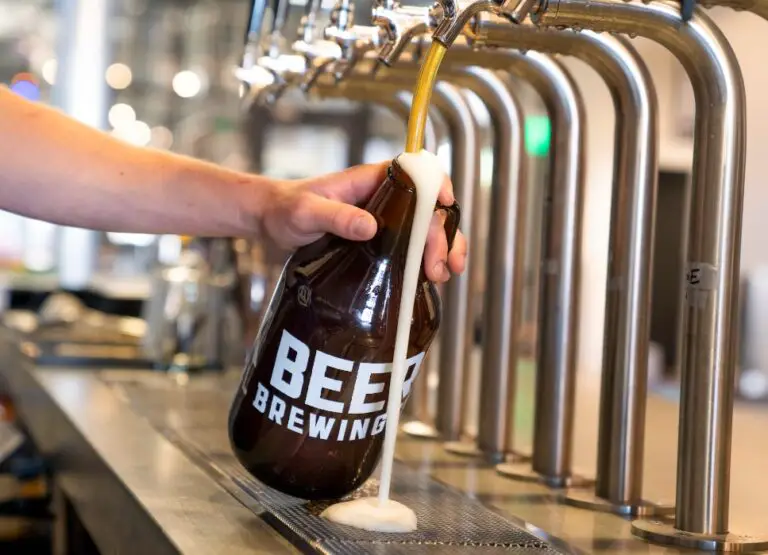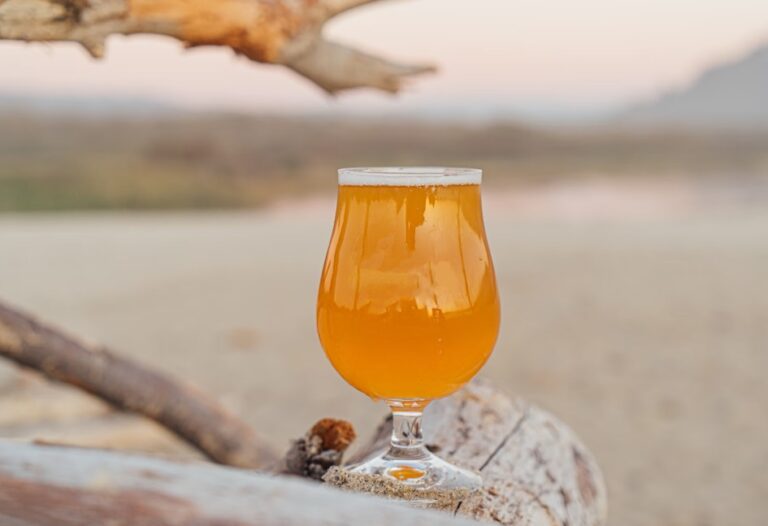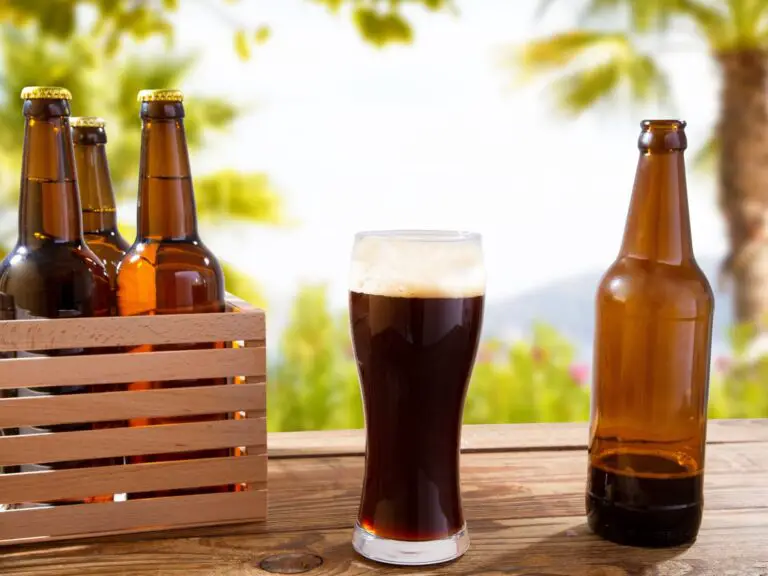Does Beer Have Quinine?
Quinine? Does beer have quinine? Let’s have a look!
Yes, beer does contain trace amounts of quinine, although the levels are relatively low. Quinine is not a typical ingredient in the brewing process, but it can be present due to the use of hops.
(on the other hand, ginger beer does not have quinine)
Hops, a fundamental component in beer, belong to the Cannabaceae family, which also includes the Cinchona tree, the primary source of quinine. During the brewing process, hops may impart a subtle amount of quinine-like compounds to the beer.
Follow us on Instagram!
However, it’s important to note that the concentrations are generally minimal and unlikely to have a significant impact on taste or health. The presence of quinine in beer is more of a subtle nuance rather than a defining characteristic, contributing to the complex flavor profile that beer enthusiasts appreciate.

How Much Quinine Is In Beer?
Quantifying the exact amount of quinine in beer can be challenging as it depends on various factors, including the specific brewing process, ingredients used, and individual variations.
Additionally, there is limited comprehensive data on quinine content in different beer styles. However, based on general knowledge and some studies, here’s a broad overview of the potential quinine levels in various beer styles:
Pale Ales and IPAs: These beer styles may have slightly higher quinine levels due to the increased use of hops during brewing. However, the concentration is still relatively low.
Stouts and Porters: Darker beer styles tend to have a more robust malt profile, and the quinine levels might be comparatively lower than in hop-centric styles.
Wheat Beers: Light and refreshing wheat beers may have a subtle presence of quinine, but again, the concentrations are likely to be minimal.
Lagers: Crisp and clean lagers might contain trace amounts of quinine, but the levels are generally low.
Sours and Lambics: These styles, with their unique fermentation processes, may exhibit varying quinine-like characteristics, contributing to their complex flavor profiles.

Let’s delve deeper and learn more about quinine and beer!
What Is Quinine?
Definition and Origins
Quinine is a natural alkaloid that originates from the bark of the Cinchona tree, native to the Andean forests of South America. The name “quinine” is derived from the Quechua word “kina,” signifying bark.
Chemically, quinine is classified as a cinchona alkaloid and has a bitter taste. It was first discovered by the indigenous people of Peru, who used the bark of the Cinchona tree to treat fevers. In the 17th century, the bark made its way to Europe, where its medicinal properties gained widespread recognition.
Historical Uses of Quinine
Historically, quinine was primarily known for its effectiveness in treating malaria. The bark of the Cinchona tree was used by indigenous populations in South America for centuries to alleviate symptoms of fevers associated with malaria.
During the colonial era, quinine became a crucial tool in combating malaria in tropical regions, particularly in Africa and Asia, where the disease was prevalent. The British, in particular, used quinine to protect their colonial forces from malaria, leading to the inclusion of quinine in the popular beverage, tonic water.
Quinine in Medicine
Quinine’s medicinal properties extend beyond its historical use for malaria. It has been recognized for its antipyretic (fever-reducing) and analgesic (pain-relieving) effects.
While the use of quinine as a primary treatment for malaria has declined due to the development of more effective antimalarial drugs, it is still employed in some cases, and its derivatives continue to play a role in modern medicine.
Quinine and its derivatives are also utilized to treat certain muscle cramps and have been investigated for potential applications in other medical conditions. However, it’s important to note that quinine consumption should be regulated, as excessive intake may lead to adverse effects.
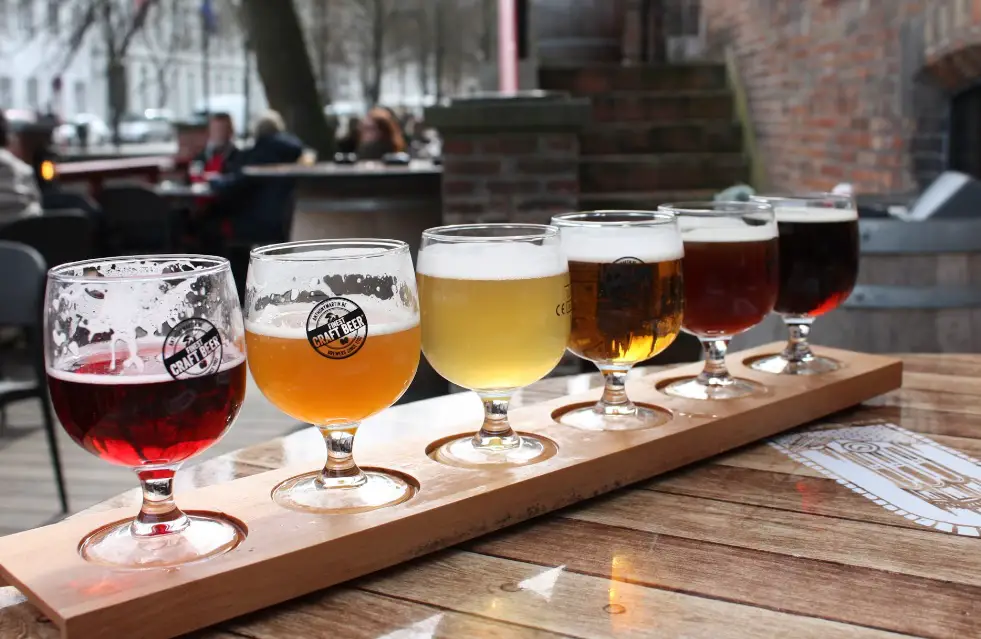
Brewing and Quinine – Why does Beer have Quinine?
Beer is crafted from four fundamental ingredients: water, malted barley (or other grains), hops, and yeast. Each ingredient contributes distinct characteristics to the final product, shaping the beer’s flavor, aroma, and appearance. Let’s go further…
Role of Hops in Beer
Hops, the cone-shaped flowers of the Humulus lupulus plant, are a crucial element in brewing. They contribute bitterness, flavor, and aroma to beer. Traditionally, hops were added to beer for preservation, but they have since become integral to the diverse and nuanced profiles of various beer styles.
Quinine in Beer – Yes, it comes from Hops
Quinine can find its way into beer through the use of hops. Hops contain various compounds, including some that share structural similarities with quinine. While quinine itself is not intentionally added during the brewing process, these quinine-like compounds in hops can impart subtle and complex flavors to the beer.
During brewing, hops are added at different stages, such as during the boiling process and sometimes during fermentation or conditioning. The heat extracts essential oils and compounds from the hops, including those reminiscent of quinine. However, it’s crucial to note that the concentrations are typically minimal. The primary purpose of hops in beer is to provide bitterness, aroma, and flavor, and any quinine-like compounds are just one facet of the intricate tapestry of flavors that hops contribute.
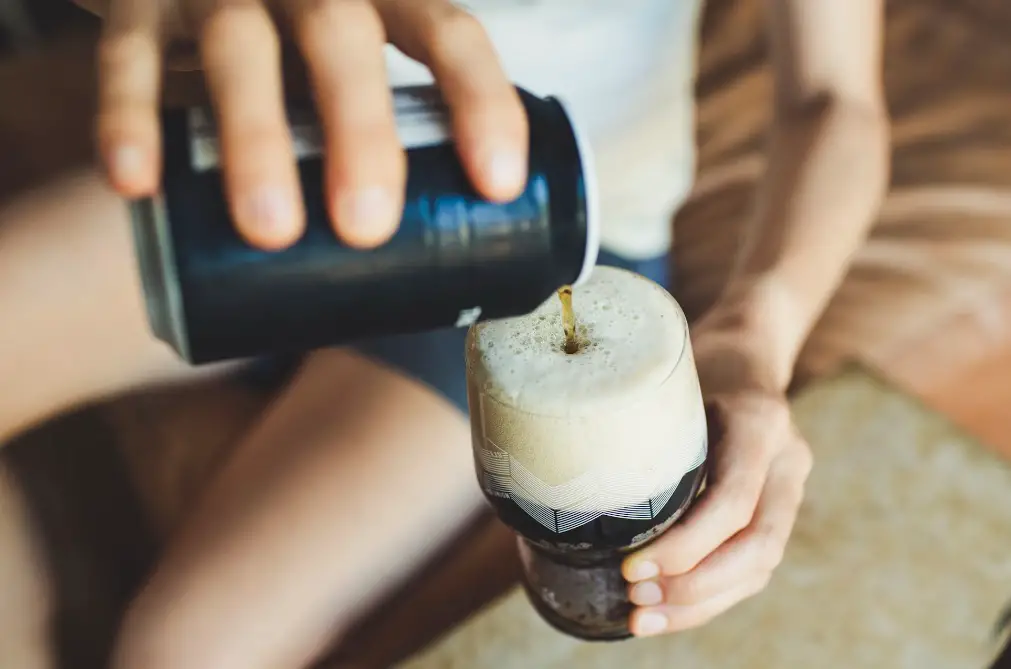
Which Other Beverages Have Quinine?
Beverages Which Contain Quinine
Quinine is prominently found in certain beverages, often used for both their distinct flavors and historical medicinal purposes. One of the most well-known beverages containing quinine is tonic water.
Tonic water was originally developed as a delivery method for quinine, as it was an effective treatment for malaria in tropical regions. Over time, tonic water has become a popular mixer in cocktails, appreciated for its unique bitter taste.
Quinine Levels in Different Drinks
The concentration of quinine varies across different beverages, with tonic water being a notable source. In commercial tonic water, the quinine content is regulated to meet safety standards and provide the characteristic bitter taste without excessive bitterness. Generally, tonic water contains around 15 to 50 milligrams of quinine per 8-ounce serving, depending on the brand.
Apart from tonic water, other beverages that may contain quinine or quinine-like compounds include bitter lemon sodas and some herbal infusions. However, these beverages typically have lower quinine levels compared to tonic water.

Taste and Quinine in Beer
How Quinine Might Impact the Flavor of Beer?
Quinine, when present in beer, can contribute to its overall flavor profile in subtle ways. The impact of quinine on beer flavor is often nuanced, and its bitterness can add depth and complexity. Similar to the bitterness derived from hops, quinine-like compounds can provide a pleasant counterbalance to the sweetness of malted barley.
The bitterness from quinine is distinct from hop bitterness, offering a slightly different flavor dimension. While hops contribute a wide range of flavors and aromas, including floral, citrus, and pine, quinine’s bitterness is often described as more medicinal or tonic-like. The interaction of these various bitter elements, coupled with the sweetness of malt and the yeast characteristics, creates a harmonious balance that defines the taste of the beer.
The Variations in Taste Across Different Beer Styles
The impact of quinine on the taste of beer can vary significantly across different beer styles. In hop-forward styles like Pale Ales and IPAs, where hops play a dominant role, any quinine-like bitterness may blend seamlessly with the hop-derived bitterness. In contrast, in malt-forward styles such as Stouts and Porters, the quinine influence may be less pronounced, allowing other flavors to take center stage.
Sour and Lambic styles, with their unique fermentation processes, may also exhibit variations in how quinine-like compounds interact with the tartness and complexity of these beers. Wheat beers, known for their light and refreshing qualities, may showcase a subtle touch of quinine that complements their overall flavor profile.
Wrapping It Up
In conclusion, while quinine is not intentionally added to beer, its subtle presence, derived from hops, contributes to the beverage’s intricate flavor profile. The minimal quinine content enhances the interplay of sweetness and bitterness, making each beer style unique. Beyond its negligible dietary impact, the incorporation of quinine in beer reflects the fascinating history and complexity of brewing.

I am a young architect with a passion that goes beyond blueprints… it’s beer! undertherosebrewing.com is more than just a blog, it’s a manifestation of my lifelong dream to explore, read, and learn everything about beer. Join the blog on this unfiltered and genuine adventure into the heart of beer culture. Cheers!

